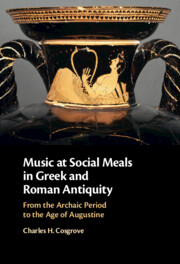Excavations to the east of the Roman fort of Inveresk in 2010 partly uncovered remains of a Mithraeum — the first from Scotland and the earliest securely dated example from Britain. A large rectangular sunken feature with lateral benches contained two altars buried face down at its north-western end. One was dedicated to Mithras, with iconography of both Mithras and Apollo as well as libation vessels. The other was dedicated to Sol, with a frieze above showing the Four Seasons. The Sol altar had a recess in the rear for a light which would have shone through his pierced rays, eyes, mouth and nose. Remains of an iron rod behind the nose hint at a more complex arrangement to create special visual or acoustic effects. Paint and plaster traces were recorded on both altars. The dedicator, G(aius) Cas(sius) Fla(…), a centurion, may have been in command of the garrison or of a legionary detachment. Stylistic links, especially in letter form, connect the work to sculptors of Legio XX. The stones and pigments are most likely from local sources. Little of the setting could be explored but there were traces of a precinct. A pit beside the Mithraeum included a large part of a well-used fineware beaker, which represented a deliberate offering. The Supplementary Material available online (http://journals.cambridge.org/bri) contains detailed descriptions of the altars, observations on the stone-working technology, lithology and pigment analysis, with extensive illustrations.


